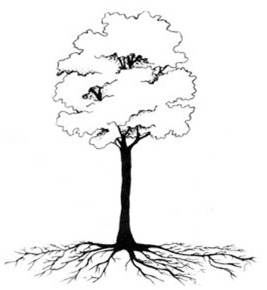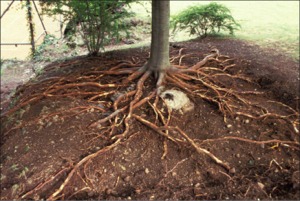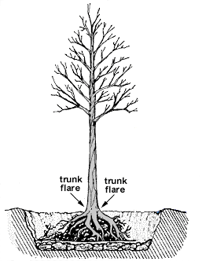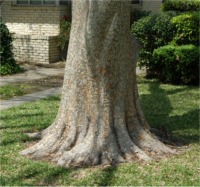Tree Root Structures In Nature
All tree root growth occurs at root nodes. These structures extend by growing forward at the root tip to make more node cells, and the node cells behind the new growing tip then become root cells. It is only the growing tip cells that advances the root in space.
Once root cells are formed, they are stationary and while they increase in size or girth, they are unable to move or change their spatial orientation.
When a root node is lost by pruning (mechanical pruning or air pruning) the tree responds by producing new root nodes from dormant buds on nearby roots.
A trunk flare (sometimes called a root flare) develops above ground at the trunk's transition to its root structures. Sometimes the top sides of the larger structural tree roots are also visible as part of this trunk flare.
The properties of the trunk wood and the root wood are quite different. Trunk wood will rot below ground. Tree roots will dehydrate and die above ground and they need to be below ground to perform their functions. Consequently, it is important for long term survival that a tree show good trunk flare, the trunk and root woods being where they are supposed to be.

Tree roots extend laterally in all directions,

The dirt was removed to show the root structure of this tree.
|
|

The trunk should flare at the transition with the below ground root structures. |

This mature tree shows good trunk flare, indicating good below ground root structures.
|
